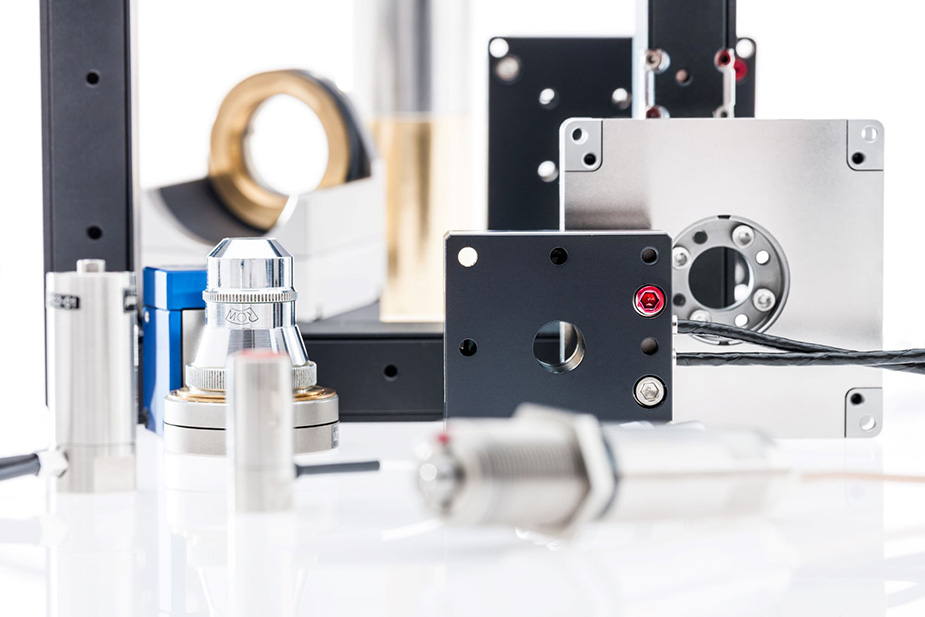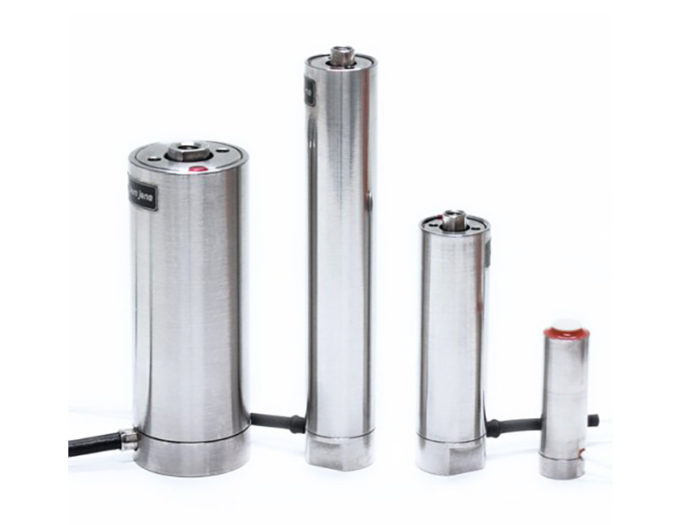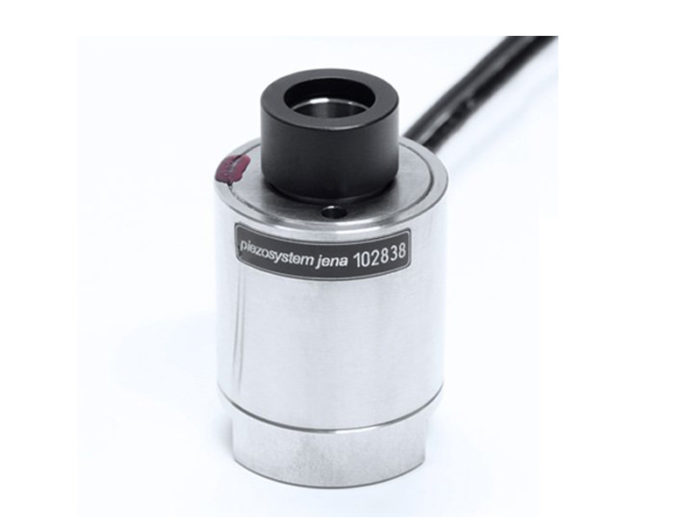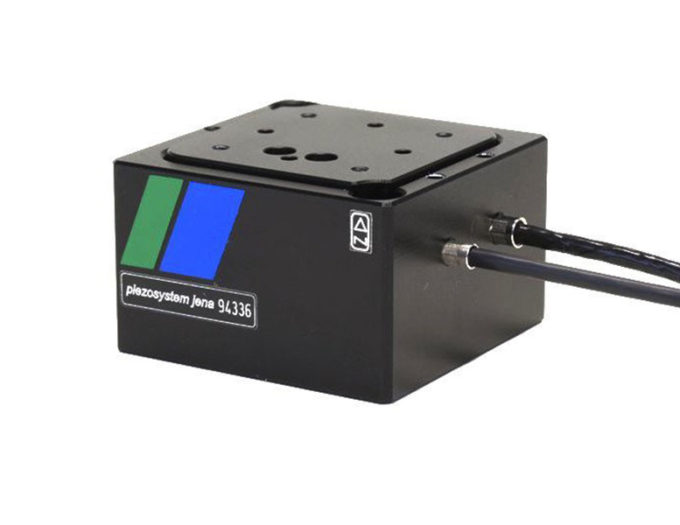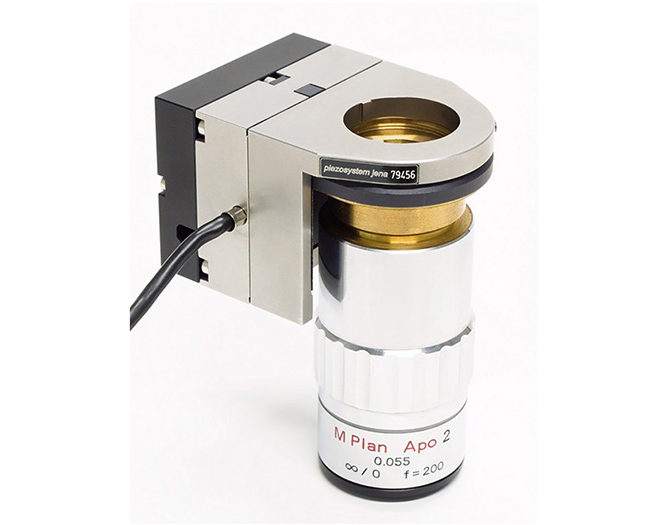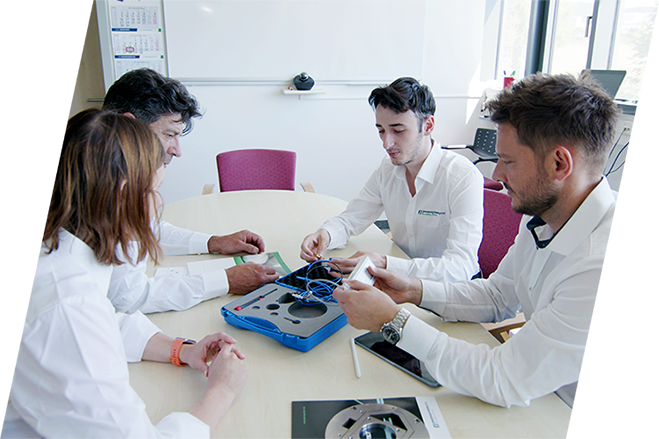15. Piezo Shock Generators
A piezo-stack can be described as a solid bar of PZT-ceramics. When this PZT bar is electrically charged rapidly, the internal stress jumps instantaneously to a high level. The initial pressure is the blocking pressure, causing an accelerated expansion of the PZT-stack and a shock is created. By coupling the PZT rod to another solid body, the shock impulse can be transferred, and the shock wave propagates. In this terminology a PZT-stack is an “active bar”, generating inherently mechanical shock pulses by electrical pulse excitation. Because the active bar is at rest, two pulses are generated propagating in opposite direction to balance the total impulse to zero. This kind of pulse generation is called “super-elastic”, because the kinetic energy of the system after the shock generation is higher than before the shock event. The result can be compared with an explosive.
These systems can produce up to 180,000 m/s2 of acceleration, are highly repeatable, and are controllable via a customizable input signal. They can also be operated at up to 100Hz, making repetitive shock applications such as lifecycle shock testing very quick. There are two different designs for the actuators, creating single and symmetrical shock waves.
Symmetrical Shock-generator:
The shockwave is generated with the piezo-bar and transferred to both ram elements (steel, titanium, brass etc.). Acoustical matching for maximum energy extraction is done by adoption of the cross sections of PZT-stack and the metal rams.
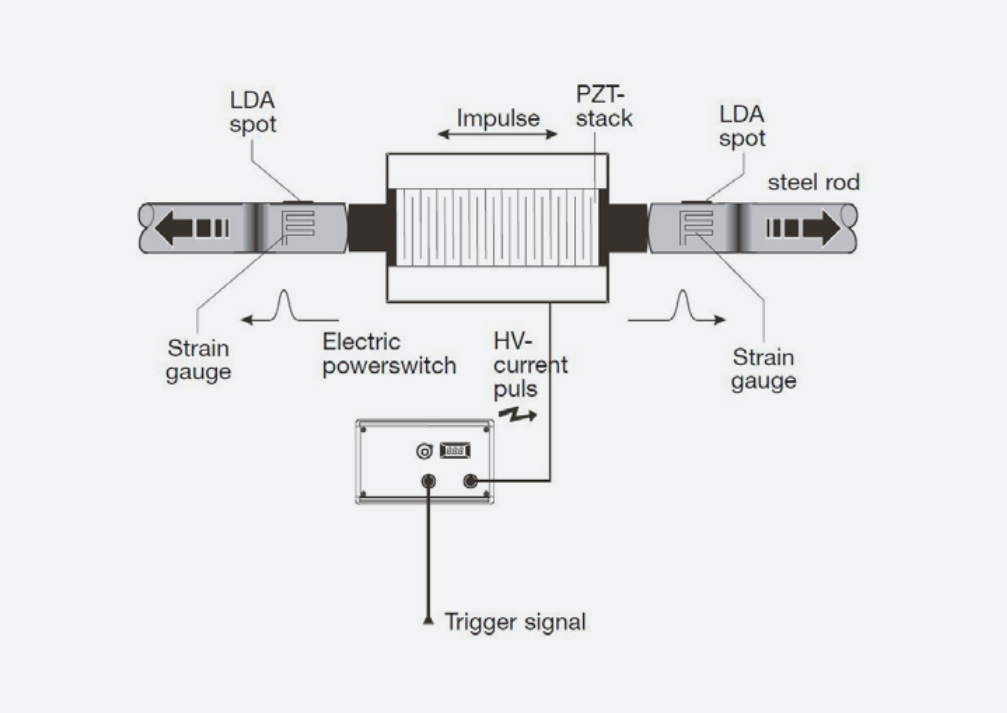
Single-end Piezo Shock-generator:
The above-mentioned symmetrical generator set-up can be modified to a single ram element with nearly double the energy and impulse output. This is accomplished by applying a larger mass to support the PZT-stack on one side (seismic mass). The impulse will then be reflected and directed towards the other output. A double pulse is created by containing nearly double the pulse energy (by elongating the total pulse output duration). The compensating impulse is transferred to the seismic mass as recoil (similar to a rifle).
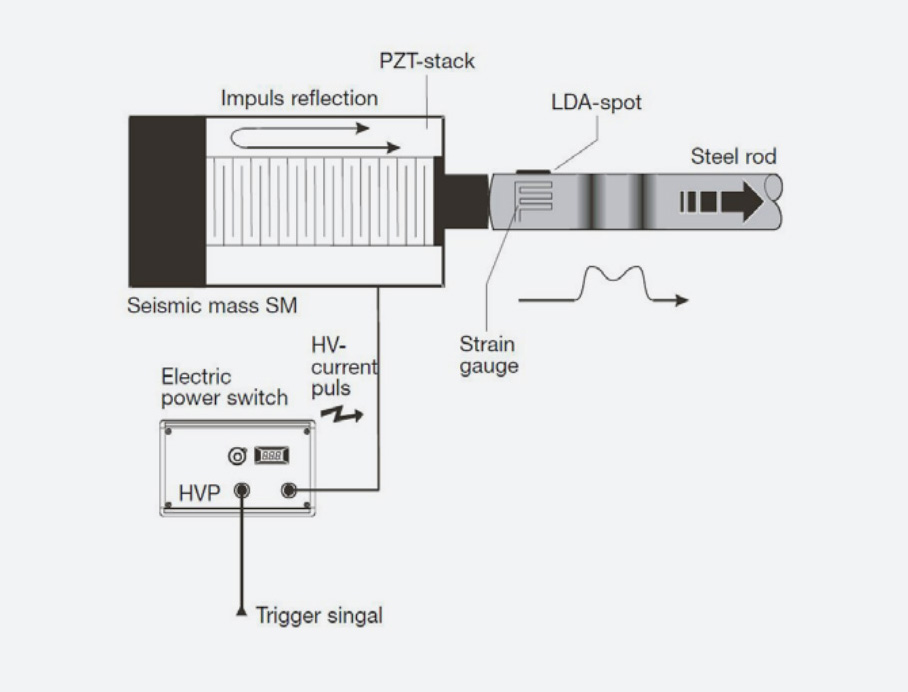
Piezo Principles Topics
- 1) Piezoelectric Effect
- 2) Design
- 3) Properties and Performance
- 4) Static Positioning
- 5) Dynamic Movements
- 6) Lever Transmission Systems
- 7) Simulation of Dynamic Properties
- 8) Closed Loop Systems
- 9) Measurement Systems
- 10) Electronics
- 11) Lifetime and Reliability
- 12) Guidelines for Usage
- 13) High Power Piezos
- 14) Piezo Shakers
- 15) Piezo Shock Generators
